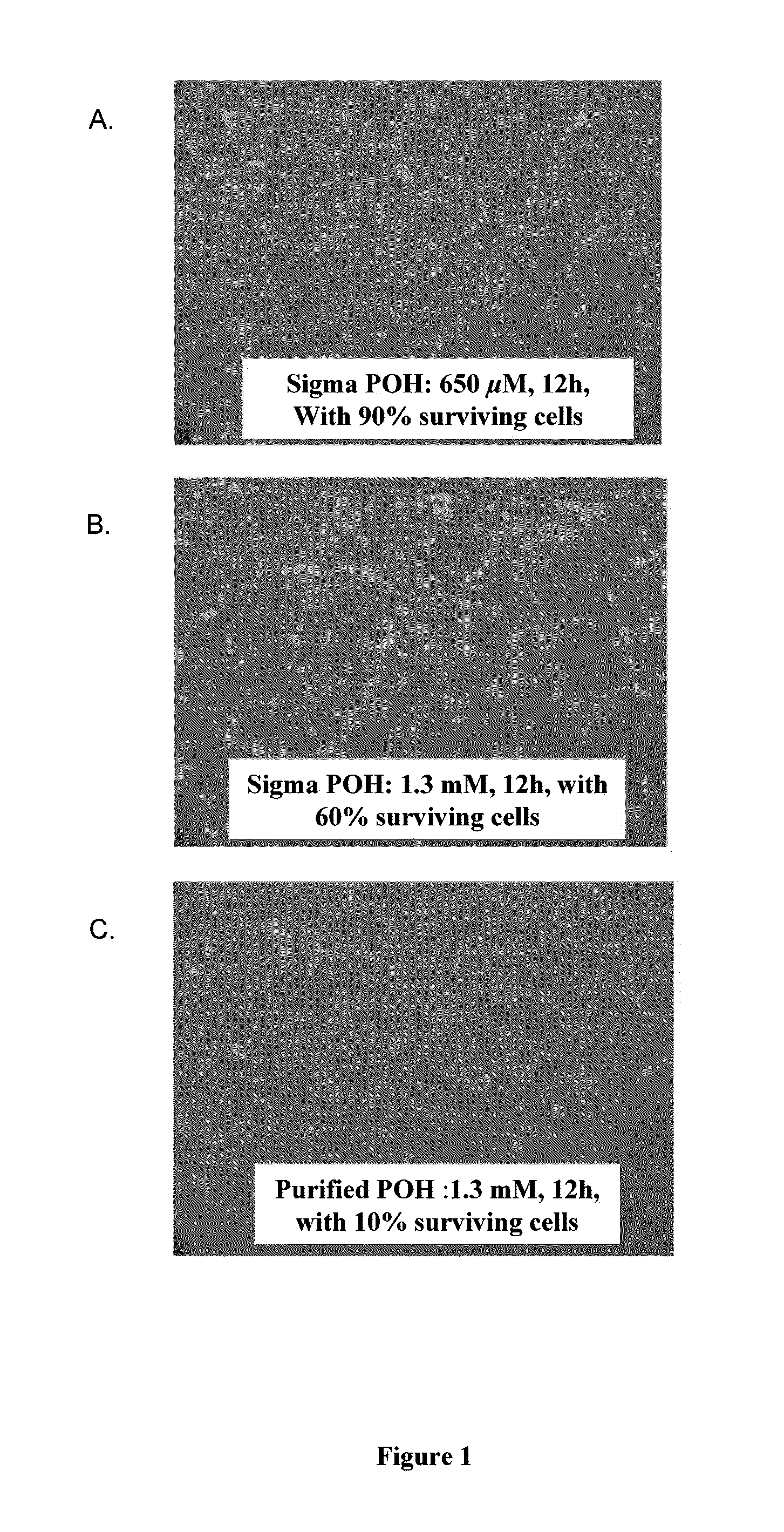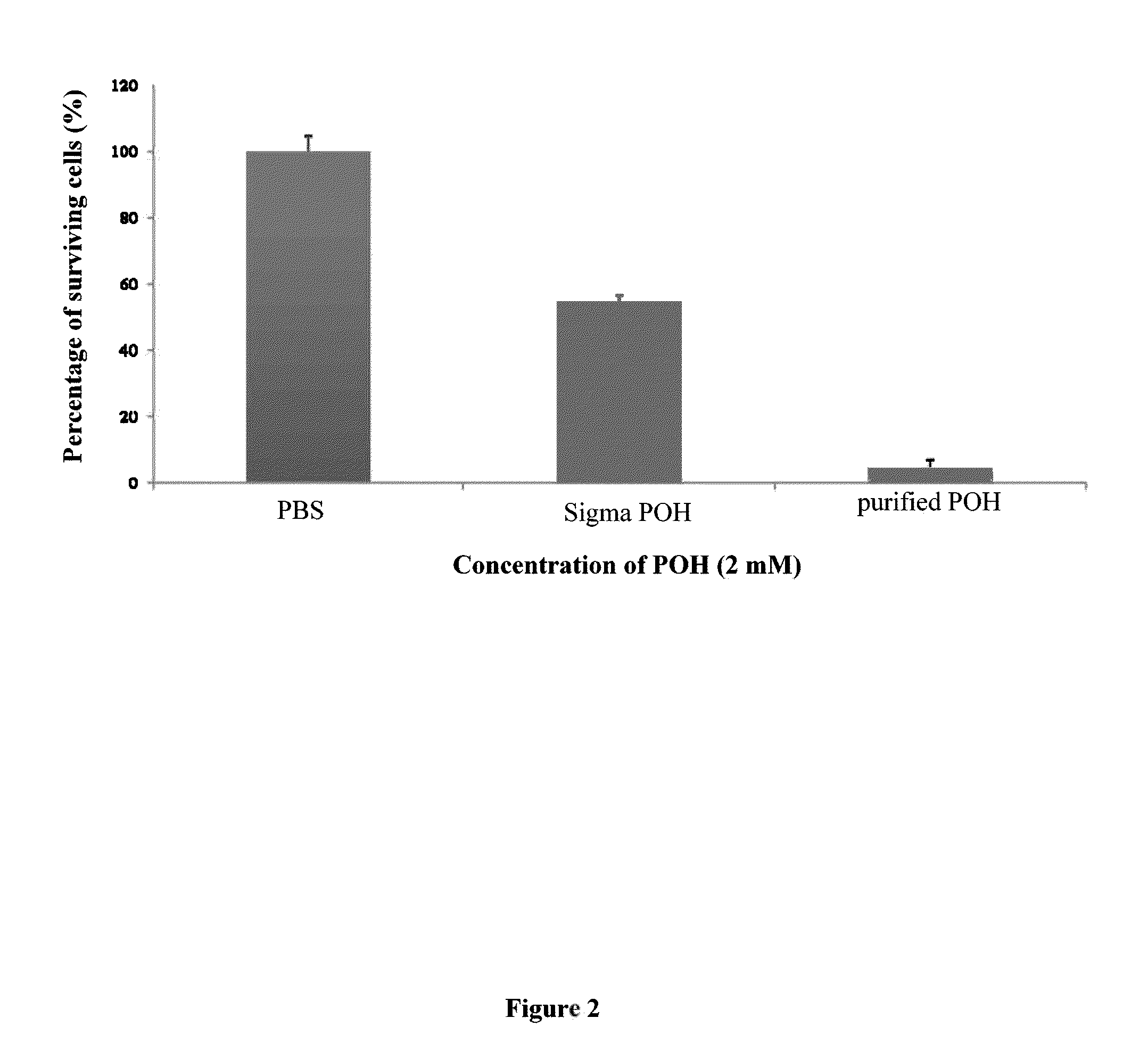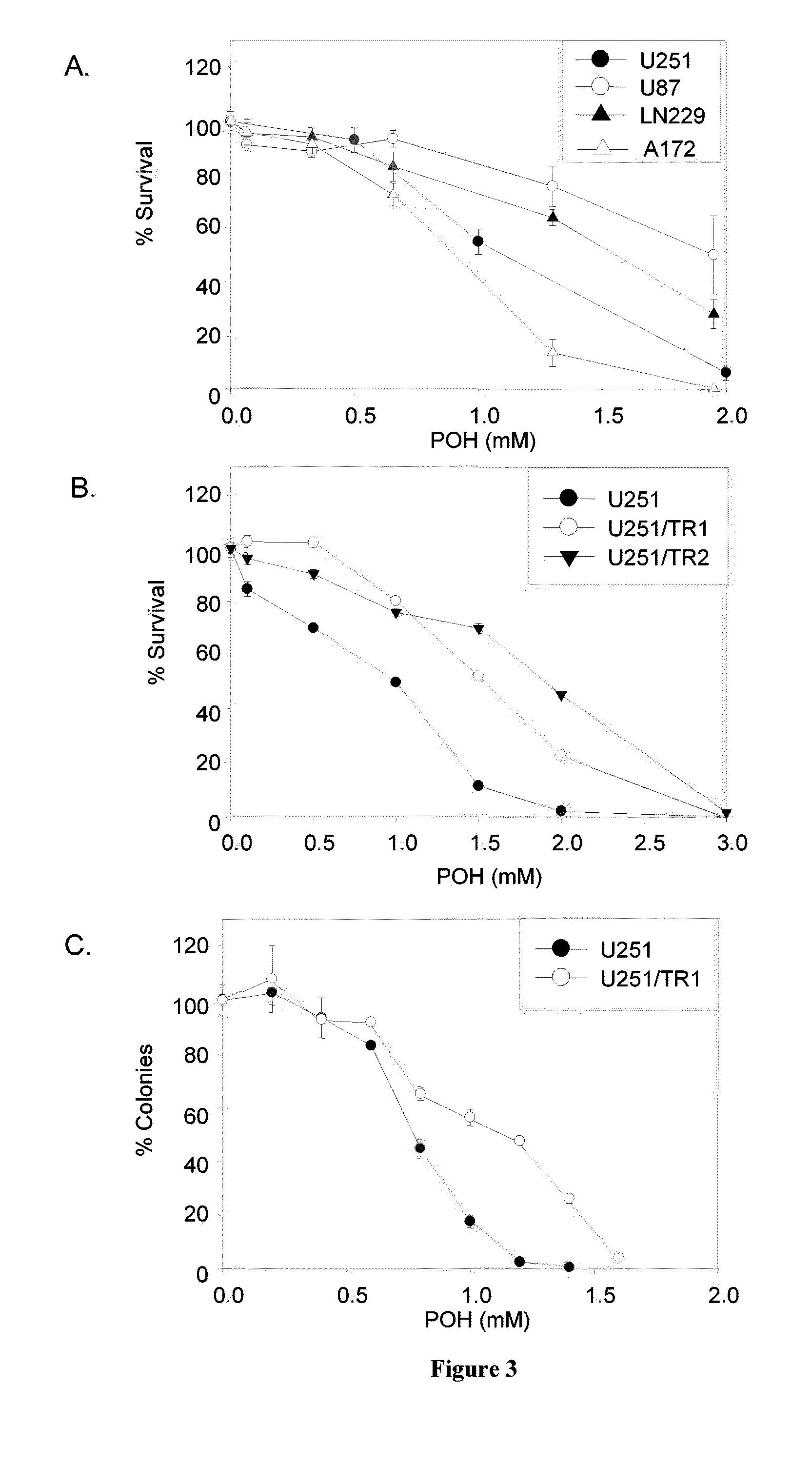Pharmaceutical compositions comprising monoterpenes
a technology of monoterpenes and compositions, applied in the field of monoterpene or sesquiterpene compositions, can solve the problems of malignant gliomas that have not seen significant improvement in the past 50 years, especially poor prognosis, and poor prognosis of malignant gliomas, so as to reduce or inhibit angiogenesis, increase paracellular permeability, and reduce or inhibit the production of pro-angiogenic cytokines.
- Summary
- Abstract
- Description
- Claims
- Application Information
AI Technical Summary
Benefits of technology
Problems solved by technology
Method used
Image
Examples
example 1
(S)-Perillyl Alcohol Purification Via 3,5-Dinitrobenzoate Ester
[0137](S)-Perillyl alcohol can be purified directly from natural products, or be obtained by synthetic modification of natural products such as beta-pinene (extracted from pine trees) by oxidation and rearrangement (Scheme 1).
[0138]
Such sources of (S)-perillyl alcohol are inevitably contaminated by isomers of the target compound which are very similar in physicochemical properties, and therefore, are difficult to remove by conventional methods of purification such as fractional distillation or chromatography.
[0139]In this Example, in order to purify (S)-perillyl alcohol from the contaminants that typically accompany it from natural product and / or synthetic sources, perillyl alcohol was first derivatized as its 3,5-dinitrobenzoate ester, which was separated from contaminants by conventional crystallization. Once the derivatized (S)-perillyl alcohol has been purified by crystallization it can then be hydrolyzed to recover ...
example 2
Synthesis of 4-Nitrobenzoic acid 4(S)-isopropenyl cyclohex-1-enylmethyl Ester (Scheme 3)
[0144]
[0145]Triethyl amine (5.92 mL, 42.4 mmol) was added to a mixture of (S)-perillyl alcohol (5.0 g, 32.8 mmol) in dichloromethane (30 ml) over a period of 0.25 h while maintaining the temperature below 15° C. The reaction mixture was stirred for 30 min at room temperature. A solution of 4-nitrobenzoyl chloride (6.39 g, 34.4 mmol) dissolved in dichloromethane (30 mL) was added over a period of 0.5 h while keeping the temperature below 15° C. The reaction mixture was allowed to warm to room temperature and then stirred for 3.0 h. The reaction mixture was quenched with water (50 mL) and the organic layer was separated. The aqueous layer was extracted with dichloromethane (25 mL). The combined organic layer was washed with water (2×50 mL) and dried over sodium sulphate (20 g). The filtered organic layer was concentrated to give an oil (Weight: 8.9 g, yield: 90%).
example 3
Synthesis of 4-chlorobenzoic acid 4(S)-isopropenyl cyclohex-1-enylmethyl Ester (Scheme 4)
[0146]
[0147]Triethyl amine (2.85 mL, 20.5 mmol) was added to a mixture of (S)-perillyl alcohol (2.5 g, 16.4 mmol) in dichloromethane (25 ml) over a period of 0.25 h while maintaining the temperature below 15° C. The reaction mixture was stirred for 30 min at room temperature. A solution of 4-chlorobenzoyl chloride (3.01 g, 17.2 mmol) dissolved in dichloromethane (10 mL) was added over a period of 0.5 h while keeping the temperature below 15° C. The reaction mixture was allowed to warm to room temperature and then stirred for 3.0 h. The reaction mixture was quenched with water (30 mL) and the organic layer was separated. The aqueous layer was extracted with dichloromethane (25 mL). The combined organic layer was washed with water (2×30 mL) and dried over sodium sulphate (15 g). The filtered organic layer was concentrated to give an oil (Weight: 3.8 g, yield: 81.7%).
PUM
| Property | Measurement | Unit |
|---|---|---|
| temperature | aaaaa | aaaaa |
| temperature | aaaaa | aaaaa |
| temperature | aaaaa | aaaaa |
Abstract
Description
Claims
Application Information
 Login to View More
Login to View More - R&D
- Intellectual Property
- Life Sciences
- Materials
- Tech Scout
- Unparalleled Data Quality
- Higher Quality Content
- 60% Fewer Hallucinations
Browse by: Latest US Patents, China's latest patents, Technical Efficacy Thesaurus, Application Domain, Technology Topic, Popular Technical Reports.
© 2025 PatSnap. All rights reserved.Legal|Privacy policy|Modern Slavery Act Transparency Statement|Sitemap|About US| Contact US: help@patsnap.com



